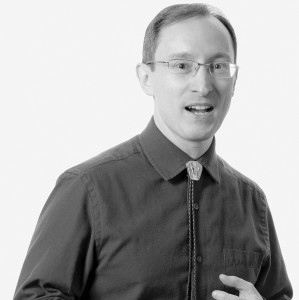3M Fellow Philippe Caignon teaches learning from one another
Concordia professor explains his student-centred approach
Share
 I was a university student for 12 great years and have been a teacher for 19 wonderful more years. As a student, I explored knowledge as an astrophysicist would investigate the universe; as a teacher, I marvel at the many accomplishments of my students, as a child wonders at the extraordinary feats of superheroes.
I was a university student for 12 great years and have been a teacher for 19 wonderful more years. As a student, I explored knowledge as an astrophysicist would investigate the universe; as a teacher, I marvel at the many accomplishments of my students, as a child wonders at the extraordinary feats of superheroes.
During all these years at university, I have not only gained knowledge and experience, but also a sense of self-realization through commitment, perseverance and hard work, qualities that define both students and instructors.
Two of a kind
Students and professors are more alike than most people know: Students write papers, take exams, submit lab reports and, finally, obtain a grade from their teachers at the end of every semester; professors write articles, undergo regular performance reviews, submit grant proposals and, ultimately, get assessed by their peers and students at the end of each semester.?Through all this, both students and teachers learn and teach.
Caignon is a 3M National Teaching Fellow. Click to read about all 10 winners.
Yes, students teach. All students teach. When a friend or classmate experiences difficulties in understanding a concept or an assignment, students, naturally, offer their assistance. I have never seen a student refuse to help a fellow student in need of pedagogical support. This behaviour is called peer teaching, and I encourage it both in and outside of class.
Of course, all teachers learn. They learn the same way students do, by reading, attending lectures and conferences, and by talking to their colleagues. Collaboration is a must, but it is also a difficult art to master. This is not only true for professors; it is a fact of life, and it is the reason why students are often “pushed” to work in groups.
Learning and teaching: the perfect pair
 In my eyes, students and teachers are two sides of the same coin. Likewise, learning and teaching are two facets of the same gem. This gem is knowledge. You can look at it from different perspectives, but, in the end, it remains the same entity. However, these two facets, or points of view, are primordial and define the very nature of university life.
In my eyes, students and teachers are two sides of the same coin. Likewise, learning and teaching are two facets of the same gem. This gem is knowledge. You can look at it from different perspectives, but, in the end, it remains the same entity. However, these two facets, or points of view, are primordial and define the very nature of university life.
Indeed, learning at university is more than acquiring specialized knowledge. It is also a deep, personal experience through which students develop unique individual, familial and social skills. These skills allow students to become leaders who genuinely care about people, society and the environment.
In the same manner, teaching is more than a simple transfer of knowledge. It is also a remarkable art through which instructors create a strong personal and stimulating relationship that will empower students and teachers alike, and make them wise, aware and caring.
From wishes to reality
To reach these goals, I have adopted a student-centred pedagogical approach, which focuses on students’ learning processes, i.e., on what students do to learn. This means that I try to learn as much as possible about my students’ prior knowledge, as well as their individual skills, aptitudes and challenges in the interest of using appropriate pedagogical tools and approaches.
Pedagogical transparency and knowledge appropriation
One of the most helpful approaches I use in class is called “pedagogical transparency.” At the start of every semester, for instance, I explain to my students what we will do, how we will do it, and why we will do it. By way of example: In my discipline, Terminology, students have to learn to record information according to a strict professional norm. As such, I explain to my students that new knowledge is usually built upon prior knowledge. Therefore, through a simple exercise of information recording, they are made aware of their current knowledge and skills. Next, in groups of three or four, they analyze their results and compare them with the ones of an actual terminologist. They are then invited to give their opinions, ask questions and share their objections or critiques. At the end of this activity, I tell them they have acquired new knowledge through practice and analysis of their practice, as well as through reflection upon their practice and the practice of an expert.
This approach allows students to take ownership of knowledge early on. Indeed, to retain knowledge, students must make it theirs. They have to understand that they are allowed to play with knowledge, and to modify and improve it. Comparable to their teachers, students also contribute to the advancement of knowledge in a very tangible way. And yes, teachers learn from students, too.
Philippe Caignon is a professor of terminology and translation at Concordia University.